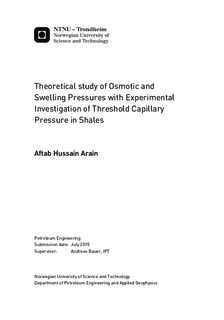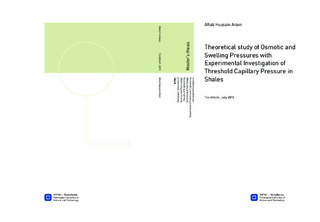| dc.description.abstract | Shales are considered to be the most problematic and challenging formation encounter during drilling. The major problems encountered during shale drilling are related to wellbore instability. The unfavorable interaction between the shale and the water-base mud is considered to be the primary cause of shale instability. The fluid invasion increases the pore pressure and reduces the shale strength by altering the stress state of shale. Whereas, hydration of shale can cause the development of swelling stress and results in wellbore instability.
The initial plan for this thesis was to conduct laboratory experiments to measure the osmotic and swelling pressures in shales as a function of stress. Therefore, the major part of this thesis comprises theoretical knowledge of osmotic and swelling pressure. Unfortunately the only available equipment was engaged for SINTEF s own project work, which was threshold capillary pressure measurement on shale. Therefore, in the later stage in terms of time, it was decided to include the laboratory experiments of capillary threshold pressure in shale.
The shales having wellbore instability problems can be drilled with oil-base mud. The low permeable water-wet shales generate high capillary forces which prevents the fluid flow into the shale even at significant overbalance pressures. However, if the wellbore pressure would be adequately high enough, it may overcome the capillary forces and invade the formation and cause wellbore instability. Therefore, during process it must be known that how much the wellbore pressure should be to avoid invasion in shale.
The capillary threshold pressure was measured for two different types of shale sample by using base oil as non-wetting phase. The approach used for the measurement was standard approach, which includes consolidation phase and capillary threshold pressure phase. The experiments were performs on two different shale samples; one was Pierre shale and another was Field shale. In first test only threshold capillary pressure was measured, while in second test the capillary breakthrough pressure was measured in addition to the capillary threshold pressure. The estimated capillary threshold pressure for Pierre shale was 0.5 MPa and for Field shale was 0.3 MPa. Also the estimated capillary breakthrough pressure for Filed shale was 0.5 MPa. | |

